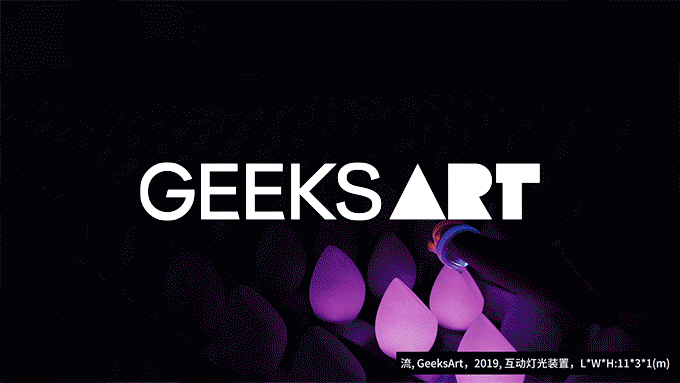清代词学流派纷纭,名家辈出,其中以“彊村”声名最著。湖州市埭溪镇就是著名的“清末四大家”之一朱祖谋的故乡,埭溪人朱祖谋编选了广为人知的宋词选本《宋词三百首》,同时收录辑刻了词人最多的《彊村丛书》,并培养了众多词人并形成了“彊村词派”。本项目受湖州埭溪镇政府、湖州词学院及新华智云的委托,希望充分挖掘属地的历史人文资源,共同为朱祖谋打造一座词学专题馆,并将其命名为:彊村词学馆。
In Qing Dynasty, there were many schools of Ci poetry, among which “Qiangcun” was the most famous one. Daixi Town, Huzhou City is the hometown of Zhu Zumou, one of the famous “four famous poets in the late Qing Dynasty”. Daixi native Zhu Zumou compiled the well-known anthology “Three Hundred Song Ci Poems”, and at the same time, collected the Qiangcun Series with the largest number of poets, and trained many poets and formed the “Qiangcun Ci poetry exhibition hall”. This project is entrusted by Daixi Town Government of Huzhou, Huzhou Ci Academy and Xinhua Zhiyun, hoping to fully tap the local historical and humanistic resources and jointly build a special museum of Ci for Zhu Zumou, and named it Qiangcun Ci poetry exhibition hall
▲彊村词学馆正立面
▲彊村词学馆正入口
彊村词学馆位于浙江省湖州市吴兴区埭溪镇的古街上。在改造之初,我们对古镇现状及原有建筑的状况进行了评估:项目是对一座既有保留建筑的改造,建筑体量较小是一个480方左右的小型建筑;原建筑是一座框架结构的坡屋顶现代建筑,分为左右两个体量:一高一低、一大一小,中间有一处连廊;总体建筑高度和周围建筑相似,原建筑是一种分开的坡屋顶状态,以最直接的方式–坡屋顶来回应古街城市肌理,其体量与高度与小镇总体街道感受基本一致。
Qiangcun Ci poetry exhibition hall is located in the ancient street of Daixi Town, Wuxing District, Huzhou City, Zhejiang Province. At the beginning of the renovation, we evaluated the status quo of the ancient town and the original buildings: the project is the renovation of an existing reserved building, which is a small building with a small volume of about 480 square meters; The original building is a modern building with a sloping roof with a frame structure, which is divided into two volumes: one high and one low, one large and one small, with a corridor in the middle; The overall height of the building is similar to that of the surrounding buildings. The original building is a separate sloping roof, which responds to the texture of the ancient street city in the most direct way-sloping roof. Its volume and height are basically consistent with the overall street feeling of the town.
▲原始建筑状况
▲植入“补位”
因此我们在设计策略上不希望过大地破坏既有建筑与街道的关系,希望通过植入式设计方式对既有建筑进行“补位”,以形成一个建筑新的“整体性”。
Therefore, we don’t want to destroy the relationship between the existing buildings and the streets too much in the design strategy, and we hope to “make up” the existing buildings by means of implantable design, so as to form a new “integrity” of the buildings.
▲多层关系:人-装置-建筑-城市
▲入口节点细节
我们将一个纯黑色的装置盒体嵌入两个坡屋顶建筑的中间,黑盒的中间是以纵横交错的钢结构构架组成的“内化的坡屋顶”,整个黑盒作为一种坡屋顶的“中介”体。这一“中介”体一方面取位置上的“中”,它插入在两个体量中间,即是建筑的中心也同时形成了区域中心,为整个街道树立新的活力和标识力;同时“中”也是体量上的适中,不高于原有体量,又不过于压迫街道,“中”以自身为中心去理解周遭环境,以对环境产生调和。另一方面,这一“中介”体又将人从城市中逐步引向室内,借用尺度的缩小,人在通过这一长廊进入的过程中,一直压缩到近乎门高之后,方才进入展厅内部。这一整个过程中经历了:人从对城市的感知-人对“中介”装置体的感知-人对室内空间的感知,这一变化的过程温润自然。
We embed a pure black installation box in the middle of two sloping roof buildings. The middle of the black box is an “internalized sloping roof” composed of crisscross steel structures, and the whole black box serves as an “intermediary” of sloping roofs. On the one hand, this “intermediary” body takes the “middle” position, and it is inserted between the two volumes, that is, the center of the building also forms a regional center, thus establishing new vitality and marking power for the whole street; At the same time, “Zhong” is also moderate in size, not higher than the original size, and not too oppressive to the streets. “Zhong” takes itself as the center to understand the surrounding environment, so as to harmonize the environment. On the other hand, this “intermediary” body gradually leads people from the city to the interior. With the reduction of scale, people enter the exhibition hall after being compressed to nearly the door height in the process of entering through this corridor. This whole process has gone through: people’s perception of the city-people’s perception of “intermediary” devices-people’s perception of indoor space, and this process of change is warm and natural.
▲从入口回看街道
▲仰望视点,高窗与光线的进入
在这一“中介”体黑色的外框内部,所有的构架都被漆成了耀眼的朱红色,构架的间隔自身是有孔隙的,因此在构架的反面我们设置有天窗,来保障人向入口行进的过程中是向着光前行的,不会因身处夹缝而感到昏暗。
Inside the black outer frame of this “intermediary” body, all the frames are painted bright scarlet, and the intervals of the frames themselves are porous. Therefore, we have skylights on the opposite side of the frames to ensure that people walk towards the light in the process of marching towards the entrance, and will not feel dim because they are caught in the cracks.
▲彊村词学馆内部展陈空间
▲彊村词学馆图纸
在进入到词学馆空间内部后,设计师希望整体内环境保有纯粹的信息陈列和空间直觉,不以传统展示空间的设计方式去做场景的复现和装饰上的堆砌。由于内部大量数字展陈的需要,展厅内部光环境需要进行收缩,即使这样一些既有的窗体也没有被粗暴的封闭掉,而是将信息有密度的陈列于视线高度,部分自然光线依然可以从底部或是保留的窗体中进入到室内来,这也是信息层通过形式和高度的不断变化对既有空间的“补位”。
一方面,词学馆中的宋词是宋韵文化的重要载体,另一方面我们也希望空间本身就是承载宋韵文化的一部分。我们试图以一种简洁的语言对整个改造进行介入,更加精准的控制改造的部分,不去拒绝既有建筑环境状况。“新宋韵”精神体现在建筑改造中的“新”部分在于一种“转化”,一方面体现在入口的“中介”装置将坡屋顶的形式向内转化,另一方面则是展陈方式上向外的一种转化,是从信息陈列向空间的一种转化。从外显形式转化为内显形式的一种转化,再到展陈方式中大量数字交互设备的运用,都试图以新的当代语境回应宋韵精神,是以另一种维度进行的反馈。
After entering the space of Ci-poetry Museum, designers hope that the overall environment will keep pure information display and space intuition, instead of repeating scenes and stacking decorations in the traditional display space design way. Due to the need of a large number of digital exhibitions inside, the light environment inside the exhibition hall needs to be contracted. Even so, some existing windows are not roughly closed off, but information is densely displayed at the height of the line of sight, and some natural light can still enter the room from the bottom or the reserved windows, which is also the “complement” of the existing space by the constant change of the form and height of the information layer.
On the one hand, the Song Ci in Ci School is an important carrier of Song rhyme culture, on the other hand, we also hope that space itself is a part of Song rhyme culture. We try to intervene in the whole renovation in a concise language, control the part of the renovation more accurately, and not reject the existing building environment. The “new” part of the spirit of “New Song Rhyme” in architectural renovation lies in a kind of transformation. On the one hand, the “intermediary” device at the entrance transforms the form of sloping roof inward; on the other hand, it transforms the way of exhibition outward, from information display to space. The transformation from explicit form to explicit form, and then to the application of a large number of digital interactive devices in the exhibition mode, all try to respond to the spirit of Song Yun in a new contemporary context, which is feedback from another dimension.
▲彊村词学馆内部展陈空间
▲朱祖谋家谱长卷
项目信息——
名称:彊村词学馆
地点:湖州市吴兴区埭溪镇
设计团队:方润武、王明皓、麻智超、胡毓滢、徐大伟
业主:湖州埭溪镇政府
词学研究专家组:湖州词学院
项目委托方:新华智云科技有限公司
施工:湖州朗天建设有限公司
时间:2022年11月
摄影师:方舟
文字:王明皓、方润武
Project information——
Name:Qiangcun Ci poetry exhibition hall
Design:Ray&Emilio studio
Venue:Daixi Town, Wuxing District, Huzhou City
Chief Architects:Fang Runwu and Wang Minghao.
Design team:Fang Runwu, Wang Minghao, Ma Zhichao, Hu Yuying and Xu Dawei.
Owner:Daixi Town Government, Huzhou
Ci research expert group:Huzhou Ci poetry exhibition hall
Entrusting party:Xinhua Zhiyun Technology Co., Ltd.
Construction:Huzhou Langtian Construction Co., Ltd
Time:November 2022
Photographer:Fang zhou
Text:Wang Minghao, Fang Runwu



























